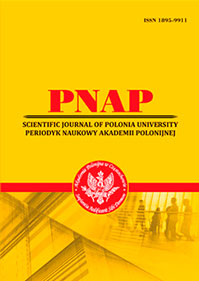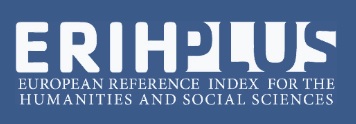ЛЕКСИЧНІ СПРИЙНЯТТЯ ТА ДИСКУРСИВНІ РЕАКЦІЇ НА ТЕМАТИЧНІ КОНСТРУКЦІЇ ЄВРОПЕЙСЬКИХ СТУДІЙ У ЦИФРОВОМУ КОНТЕКСТІ: ЛІНГВІСТИЧНЕ ОПИТУВАННЯ СТУДЕНТІВ У МЕЖАХ ПРОЄКТУ ESPERIDTA
Анотація
Цифрова трансформація вищої освіти в Європі супроводжується ускладненням термінології, зокрема у міждисциплінарних галузях, таких як європейські студії. У цьому контексті сприйняття студентами академічної лексики відіграє важливу роль у формуванні мотивації, розуміння та навчальних результатів. У статті проаналізовано, як студенти бакалаврату Університету VIZJA (Варшава, Польща) інтерпретують і емоційно реагують на п’ять ключових складених словосполучень, пов’язаних із проєктом ESPERIDTA: European Studies through Digital European Languages Policies, Digital Historical Developments, Digital European Law, Digital Management та Digital Political Science. Дослідження базується на лінгвістичному підході, орієнтованому на студента, і поєднує аналіз лексичного сприйняття з дискурсивною інтерпретацією відкритих коментарів. Участь взяли понад 100 студентів, які надали свої переформулювання, емоційні оцінки та враження щодо кожного словосполучення. Результати показали значні відмінності у рівнях зрозумілості та знайомства з термінами. Найбільші труднощі виникали із загальними або абстрактними конструкціями, такими як “European Languages Policies”, тоді як дисциплінарно конкретизовані фрази (наприклад, у галузі права чи політики) викликали менше непорозумінь.Емоційні реакції варіювалися від зацікавлення до скепсису та когнітивного перевантаження. Отримані результати вказують на необхідність більш рефлексивного та інклюзивного підходу до термінології в цифрових курсах європейських студій. Важливо враховувати як когнітивні, так і емоційні аспекти сприйняття термінів. Активне залучення студентів до аналізу академічного дискурсу сприяє підвищенню ефективності навчання та розвитку мовної чутливості.
Посилання
2. Dafouz E., & Smit U. Towards a dynamic conceptual framework for English-medium education in multilingual university settings. Applied Linguistics. 2016. 37(3), 397–415. https://doi.org/10.1093/applin/amu034.
3. Gendron M., & Barrett L.F. Emotion perception as conceptual synchrony. Emotion Review. 2018. 10(2), 101–110. https://doi.org/10.1177/1754073917705717.
4. Hagoort P., & Indefrey P. The neurobiology of language beyond single words. Annual Review of Neuroscience. 2014. 37, 347–362. https://doi.org/10.1146/annurev-neuro-071013-013847.
5. Hinojosa J.A., Moreno E.M., & Ferré P. Affective neurolinguistics: Towards a framework for reconciling language and emotion. Language, Cognition and Neuroscience. 2020. 35(6), 813–839. https://doi.org/10.1080/23273798.2019.1620957.
6. Jackendoff R., & Audring J. Morphology and memory: Toward an integrated theory. 2020. Wiley. https://doi.org/10.1002/tops.12334.
7. Kapranov Y., Iwanowska B., Stadniczeńko D., & Wierzchowski T. Student perspectives on European language policies and positive developments in the digital context: From challenges to change. Молодий вчений (Young Scientist). 2025. 2(133), 154–162. https://doi.org/10.32839/2304-5809/2025-2-133-24.
8. Kissler J., & Koessler S. Emotionally positive stimuli facilitate lexical decisions – An ERP study. Biological Psychology. 2011. 86(3), 254–264. https://doi.org/10.1016/j.biopsycho.2010.12.006.
9. Masterson M. An exploration of the potential role of digital technologies for promoting learning in foreign language classrooms: Les- sons for a pandemic. International Journal of Emerging Technologies in Learning (iJET), 15(14), 83–96. 2020. https://doi.org/10.3991/ijet.v15i14.13297.
10. Toivo W., & Scheepers C. Pupillary responses to affective words in bilinguals’ first versus second language. PLOS ONE. 2018. 14(1), e0210450. https://doi.org/10.1371/journal.pone.0210450.
11. Wodak R. Discourse and European integration. In A. Wiener, T. Börzel, & T. Risse (Eds.), European integration theory. 3rd ed., pp. 164–183. Oxford University Press. 2018. https://doi.org/10.1093/hepl/9780198737315.003.0008.
12. Wodak R., & Fairclough N. Recontextualizing European higher education policies: The cases of Austria and Romania. Critical Discourse Studies. 2010. 7(1), 19–40. https://doi.org/10.1080/17405900903453922.

Ця робота ліцензується відповідно до Creative Commons Attribution 4.0 International License.
 ISSN
ISSN 


.png)




